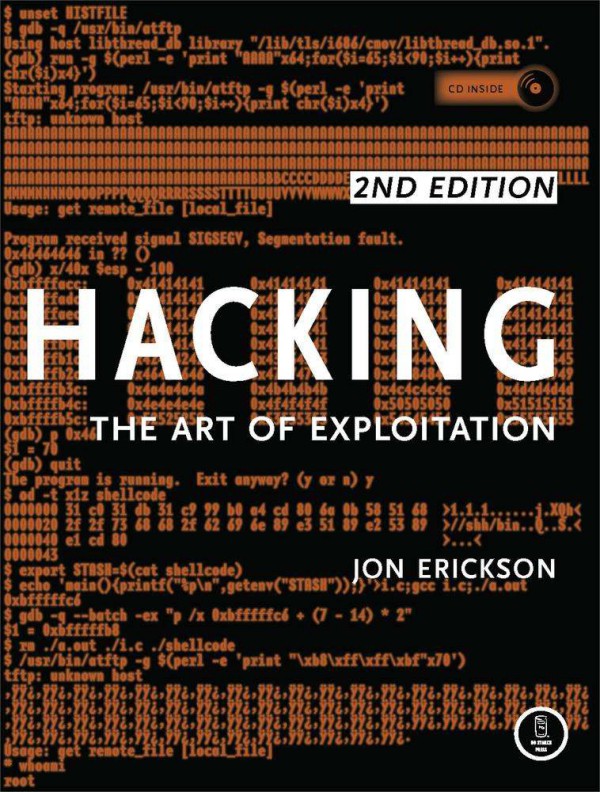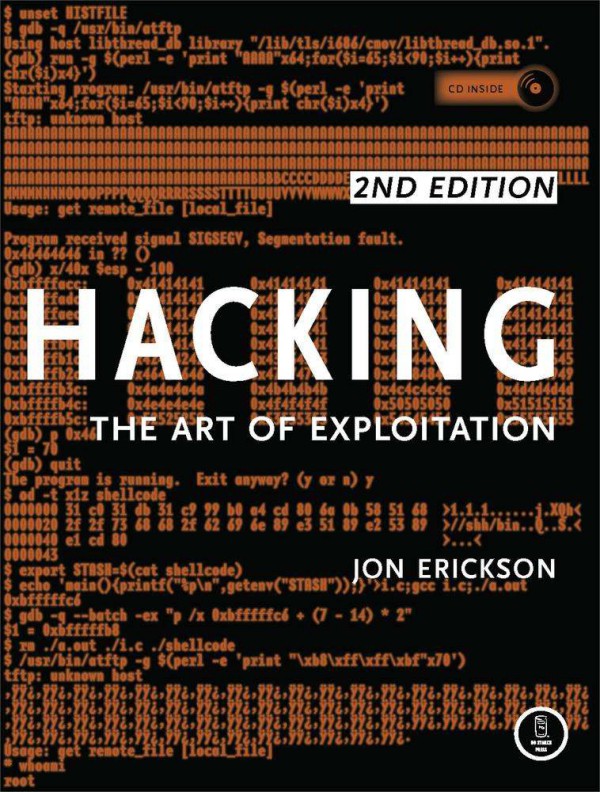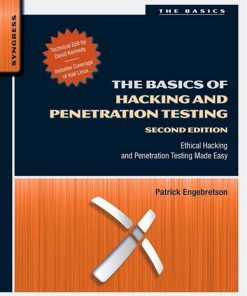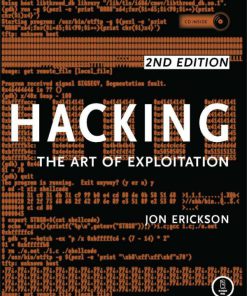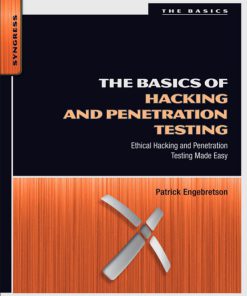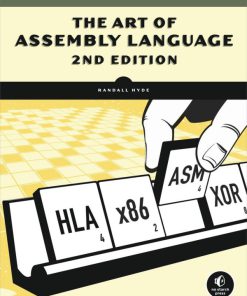Hacking The Art of Exploitation 2nd Edition by Jon Erickson ISBN 1593271441 978-1593271442
Original price was: $50.00.$25.00Current price is: $25.00.
Authors:Jon Erickson , Series:Cyber Security [4] , Tags:Computers; Security; Network Security; Internet; Online Safety & Privacy; Programming; General; COMPUTERS / Security / General , Author sort:Erickson, Jon , Ids:Google; 9781593271442 , Languages:Languages:eng , Published:Published:Feb 2008 , Publisher:No Starch Press , Comments:Comments:Hacking is the art of creative problem solving, whether that means finding an unconventional solution to a difficult problem or exploiting holes in sloppy programming. Many people call themselves hackers, but few have the strong technical foundation needed to really push the envelope.Rather than merely showing how to run existing exploits, author Jon Erickson explains how arcane hacking techniques actually work. To share the art and science of hacking in a way that is accessible to everyone, Hacking: The Art of Exploitation, 2nd Edition introduces the fundamentals of C programming from a hacker’s perspective.The included LiveCD provides a complete Linux programming and debugging environment—all without modifying your current operating system. Use it to follow along with the book’s examples as you fill gaps in your knowledge and explore hacking techniques on your own. Get your hands dirty debugging code, overflowing buffers, hijacking network communications, bypassing protections, exploiting cryptographic weaknesses, and perhaps even inventing new exploits. This book will teach you how to:– Program computers using C, assembly language, and shell scripts– Corrupt system memory to run arbitrary code using buffer overflows and format strings– Inspect processor registers and system memory with a debugger to gain a real understanding of what is happening– Outsmart common security measures like nonexecutable stacks and intrusion detection systems– Gain access to a remote server using port-binding or connect-back shellcode, and alter a server’s logging behavior to hide your presence– Redirect network traffic, conceal open ports, and hijack TCP connections– Crack encrypted wireless traffic using the FMS attack, and speed up brute-force attacks using a password probability matrixHackers are always pushing the boundaries, investigating the unknown, and evolving their art. Even if you don’t already know how to program, Hacking: The Art of Exploitation, 2nd Edition will give you a complete picture of programming, machine architecture, network communications, and existing hacking techniques. Combine this knowledge with the included Linux environment, and all you need is your own creativity.

